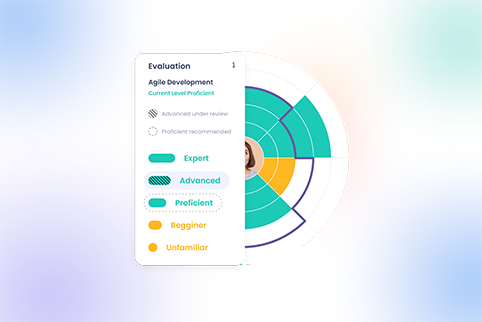
Measuring coaching impact is a more complex process as it requires a customized approach. Coaching is an effective practice for people development, as it raises awareness helping to unlock potential and maximize performance. Coaching excels with behavioral change focusing on becoming a better version of yourself, depending on the objectives you are working on.
Managers who coach their teammates help them identify, acknowledge, understand and develop their unique talents and strengths. Knowing their strengths and talents, employees have the right tools to perform and excel, both as individuals and as professionals. Moreover, employees who are aware of their strengths have a positive impact on sales and profits: on average 10% to 19% increased sales and 14% to 29% increased profits.
Hence, since coaching is so personal, there is no one-fits-all approach on measuring its success. However, there are metrics and methods to assess the impact and success of coaching.
Coaching impact: return on investment
Return on investment (ROI) is a comprehensive, consistent and reliable methodology of evaluating coaching and its impact on business. In the article “Measuring ROI Executive Coaching” firstly published in the International Journal of Coaching in Organizations, the authors described the ROI methodology which can easily be adapted to measuring the coaching impact within the organization, with managers as internal coaches (or a dedicated team of internal and/or external coaches).
Hence, the authors presented the following elements of the ROI methodology:

Source: “Measuring ROI Executive Coaching”, p. 55
Elements of ROI methodology
The Evaluation Framework details the specific types of data that bring value to business and respectively, impacts the ROI calculation. The Evaluation Framework includes four levels built on Kirkpatrick’s framework for learning and development evaluation, to which the authors added the fifth level, the actual ROI calculation.
- at the first level the data collected refers to assessing coaching impact in terms of:
- relevance to current work assignments
- importance to job success
- intention to use and relevance of new learnings
- coach’s effectiveness
- new insights gained during the coaching sessions
- at the second level the data collected measures self assessment and perception in relation to the knowledge gained, skills developed, insights etc.
- the third level measures behavioral change, actions taken during and in between coaching sessions etc.
- at the fourth level data looks at the business impact as a consequence of the new behavior, by measuring metrics such as: productivity, quality of work, costs, time, customer and job satisfaction etc.
- finally, the fifth level added by authors, refers to calculating the ROI.
Coaching impact: calculating ROI
There are multiple ways of calculating the return on investment. Our proposal is to use the next formula:

Net benefits are calculated as all monetary benefits gained as a result of the coaching practice less costs incurred. To assess the monetary benefits use experts input and participants/ team members estimates. This will help you understand the metrics, tied behaviors and specifics that might affect a company’s financials.
Costs incurred refer to both direct and indirect costs. Typical costs include coaching fees, materials, time, travel, fees and time to grow managers into coaches, administrative costs etc.
Coaching impact: intangible benefits
Once you understand the metrics relevant to each team and how they impact the financials of the company, you can define and attach to each behavior intangible benefits. These types of benefits do not directly convert into monetary benefits. However, any positive impact on these will lead to an increased productivity and hence, higher profits.
In other words, when assessing coaching impact, evaluate and make the use of measures such as (but not limited to):
- job satisfaction
- wellness, and more specifically, stress reduction
- building trust and how trustful the workspace relationships are perceived by the employees
- increased teamwork
- conflict reduction
- employee net promoter score (eNPS)
- manager’s effectiveness (through a great tool such as action-effect surveys)
Final thoughts
Measuring coaching impact is not an easy process. However, done correctly, will definitely benefit all the involved parties. There is no one magical metric suitable to everyone and every company. It is crucial to start with identifying behaviors that drive success, increase productivity and hence, profitability.
Then, design customized 360 degree assessments to evaluate the current state of those behaviors and competences. Repeat after a cycle of coaching practice ends, gather data and draw conclusions. Then re-iterate and adjust it every time it is needed.
There are several main takeaways to consider when evaluating coaching impact (especially using the ROI methodology):
- make sure coaching interventions are tied to business needs. Otherwise, the ROI will be negative and irrelevant.
- educate your employees and gain their commitment to provide data. This will give you reliable quantitative and qualitative data.
- keep the process as easy and simple as possible. Drop any bureaucracy or complexity.
- communicate results and take action on any possible improvements.
Finally, independently of the methodology used, especially when growing internally your managers into coaches, help them to cultivate behaviors such as: building relationships and trust, developing people, leading the change, inspiring others, thinking critically (and encourage critical thinking), communicating clearly (especially expectations) and last but not least, creating accountability.







